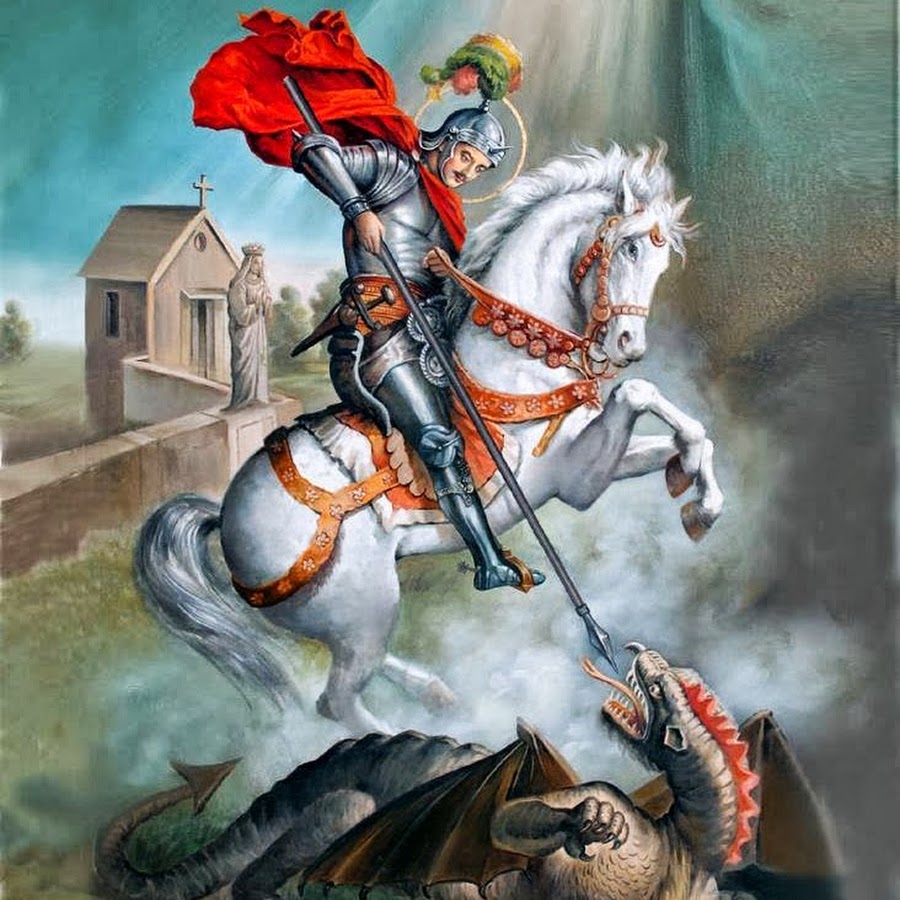St. George
| Feast day | September 25 |
| Patron | of Cork, Diocese of Cork |
| Birth | 550 |
| Death | 620 |
It is uncertain when St. George was born and historians continue to debate to this day. However, his death date is estimated to be April 23, 303 A.D.
The first piece of evidence of George’s existance appeared within the works of the Bollandists Daniel Papebroch, Jean Bolland, and Godfrey Henschen’s Bibliotheca Hagiographica Graeca. George was one of several names listed in the historical text, and Pope Gelasius claimed George was one of the saints “whose names are justly reverenced among men, but whose actions are known only to God.”
George was born to a Gerontios and Polychronia, a Roman officer and a Greek native of Lydda. Both were Christians from noble families of the Anici and George, Georgios in the original Greek, was raised to follow their faith.
When George was old enough, he was welcomed into Diocletian’s army. By his late 20’s, George became a Tribunus and served as an imperial guard for the Emperor at Nicomedia.
On February 24, 303 A.D., Diocletian, who hated Christians, announced that every Christian the army passed would be arrested and every other soldier should offer a sacrifice to the Roman gods.
George refused to abide by the order and told Diocletian, who was angry but greatly valued his friendship with George’s father.
When George announced his beliefs before his peers, Diocletian was unable to keep the news to himself.
In an effort to save George, Diocletian attempted to convert him to believe in the Roman gods, offered him land, money and slaves in exchange for offering a sacrifice to the Roman gods, and made several other offers that George refused.
Finally, after exhausting all other options, Diocletian ordered George’s execution. In preparation for his death, George gave his money to the poor and was sent for several torture sessions. He was lacerated on a wheel of swords and required resuscitation three times, but still George did not turn from God.
On April 23, 303 A.D., George was decapitated before Nicomedia’s outer wall. His body was sent to Lydda for burial, and other Christians went to honor George as a martyr.
Saint George and the Dragon
There are several stories about George fighting dragons, but in the Western version, a dragon or crocodile made its nest at a spring that provided water to Silene, believed to be modern-day Cyrene in Libya.
The people were unable to collect water and so attempted to remove the dragon from its nest on several ocassions. It would temporarily leave its nest when they offered it a sheep each day, until the sheep disappeared and the people were distraught.
This was when they decided that a maiden would be just as effective as sending a sheep. The townspeople chose the victim by drawing straws. This continued until one day the princess’ straw was drawn.
The monarch begged for her to be spared but the people would not have it. She was offered to the dragon, but before she could be devoured, George appeared. He faced the dragon, protected himself with the sign of the Cross, and slayed the dragon.
After saving the town, the citizens abandoned their paganism and were all converted to Christianity.
Prayer for St. George
St. George,
Heroic Catholic soldier and defender of your Faith, you dared to criticize a tyrannical Emperor and were subjected to horrible torture. You could have occupied a high military position but you preferred to die for your Lord.
Obtain for us the great grace of heroic Christian courage that should mark soldiers of Christ. Amen
Views: 6
